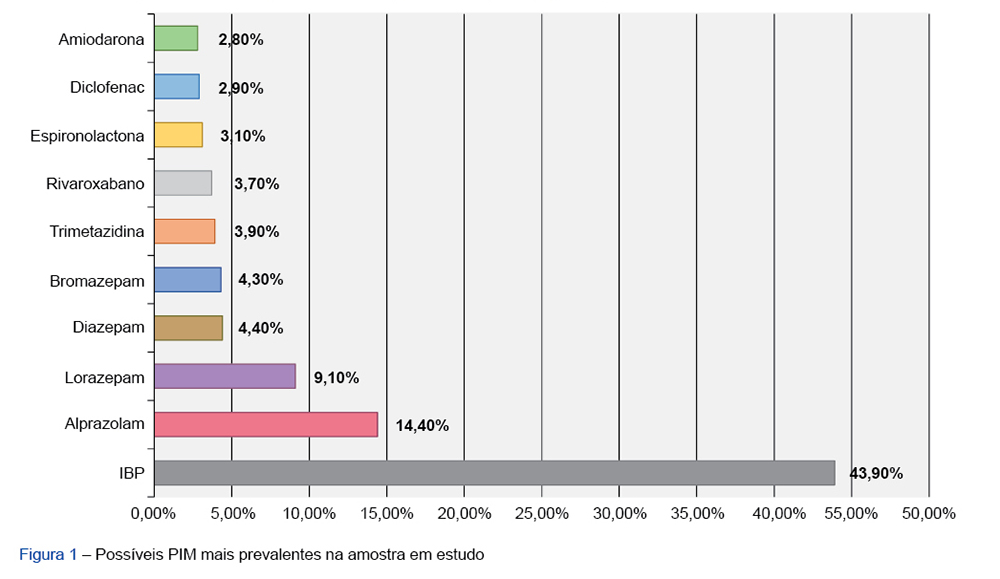SOCIAL MEDIA
Portuguese Medical Association's Scientific Journal

Introduction: In 2015, the EU(7)-PIM List was published, which identifies potentially inappropriate medicines in older patients and resulted from a consensus of experts from seven European countries. Portugal was not part of this group, so it was not originally adapted to the Portuguese reality. With this work, we intend to elaborate a list of potentially inappropriate medicines adapted to the reality of medicines marketed in Portugal, through the operationalization of the EU(7)-PIM List for the national reality and to evaluate the adequacy of its use for clinical practice.
Material and Methods: Search, in INFARMED’s Infomed database, of drugs that are included in the EU(7)-PIM List that have marketing authorization, and analysis of possible new drugs for inclusion in the list. The tool adapted to the Portuguese reality was applied to a sample of 1089 outpatient, polymedicated older patients from 38 primary care units in Central Portugal.
Results: The final PIM list adapted to the Portuguese reality includes 184 potentially inappropriate medicines (from these, 178 are active substances, five are classes of drugs, and one corresponds to the sliding scale therapeutic scheme used in insulin therapy). Of 1089 polymedicated older patients, 83.7% took at least one drug included in the final potentially inappropriate medicines list or belonging to one of the groups included in the list, and, on average, each patient took 1.74 (IQR 1 – 2).
Discussion: Even though the availability of drugs on the market is quite diverse, the EU(7)-PIM List has been used in several European countries. With this study, we operationalized the European list for the Portuguese reality, which will enable its application in clinical practice.
Conclusion: The list drawn up is a useful tool for the identification of potentially inappropriate medicines, easy to use in clinical practice and research.